What is a Ticketing System for Customer Service
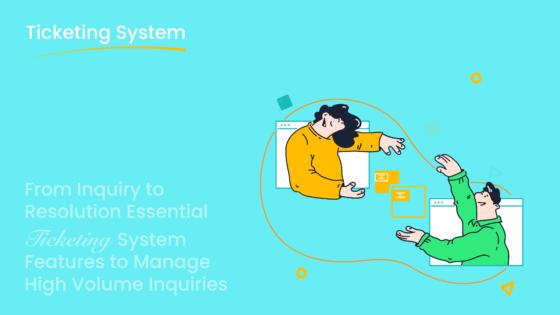
A ticketing system for customer service acts as a centralized tool to manage customer inquiries efficiently. It organizes incoming requests, ensuring no issue goes unresolved. Businesses using such systems often experience faster response times and improved customer satisfaction. Features like automation and intelligent routing streamline workflows, enabling agents to focus on resolving complex issues. For example, metrics like ticket volume and agent utilization rate help companies predict trends and balance workloads effectively.
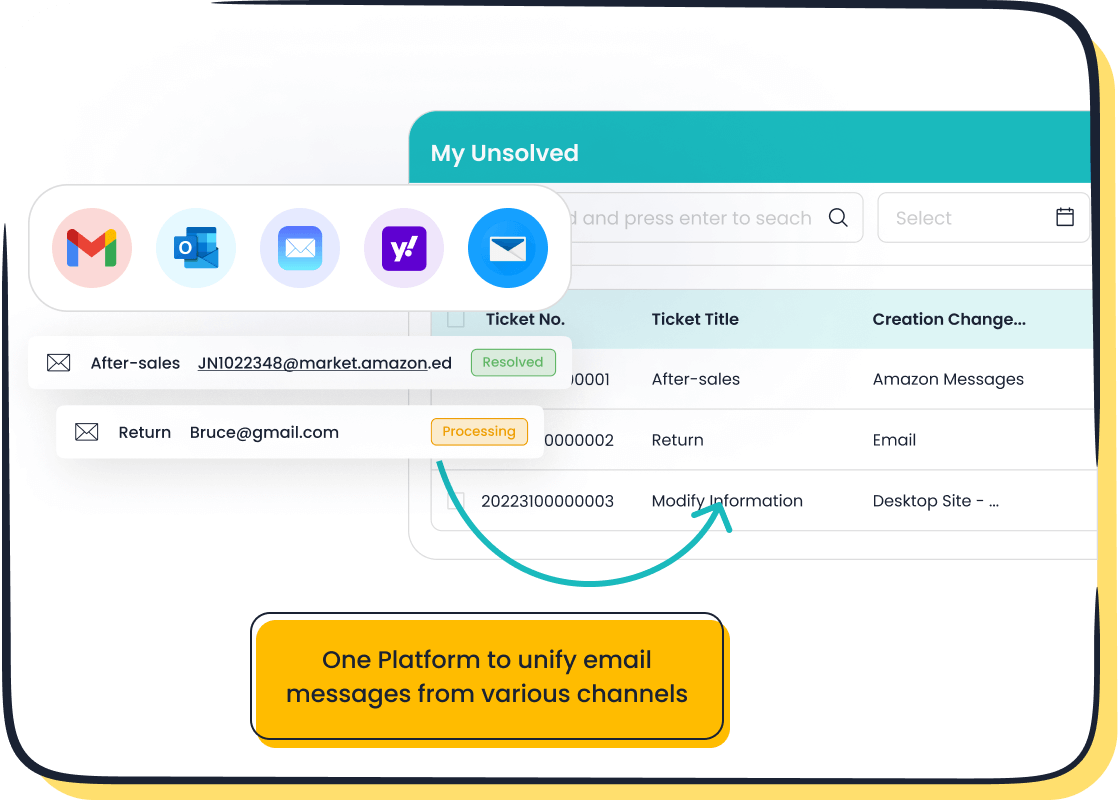
Sobot's Ticketing System stands out by integrating all communication channels into one platform. Its intelligent tools, such as SLA management and multilingual support, empower businesses to deliver seamless customer service while enhancing operational efficiency.
Understanding a Ticketing System for Customer Service
What is a Ticketing System?
Definition and purpose in customer service.
A ticketing system is a software tool designed to manage and resolve customer service requests efficiently. It acts as a centralized hub where all customer issues are logged, tracked, and resolved. By organizing inquiries into "tickets," businesses can ensure that no request gets overlooked. This system is essential for maintaining order and consistency in customer support operations.
For example, effective ticketing systems allow agents to prioritize tasks based on urgency, ensuring timely responses. This approach not only improves customer satisfaction but also enhances the overall productivity of your support team.
How it centralizes and organizes customer inquiries.
A ticketing system centralizes customer service requests from multiple channels, such as email, chat, and phone, into one unified platform. This eliminates the need to switch between tools, saving time and reducing errors. Real-time tracking of ticket status keeps both customers and agents informed about progress, promoting transparency.
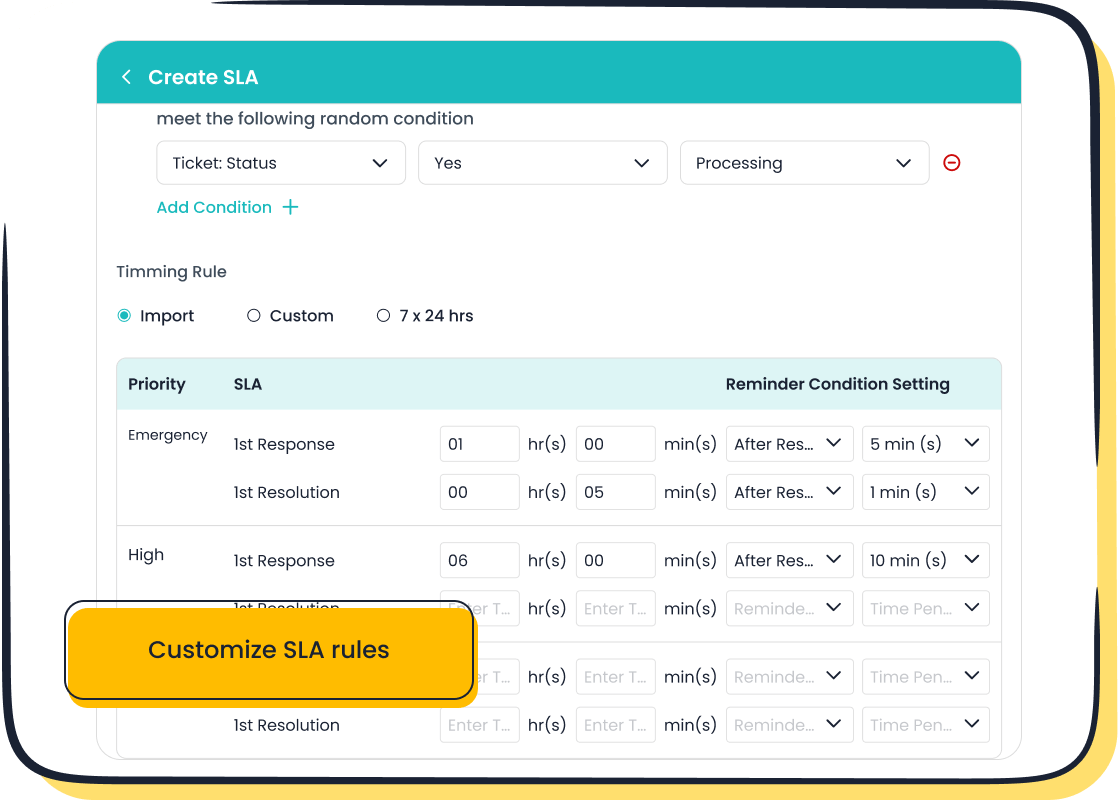
Modern systems, like Sobot's ticketing system, go a step further by integrating features such as SLA management and multilingual support. These tools ensure that your team can handle support requests efficiently, regardless of their complexity or origin.
Why Businesses Need a Ticketing System
Challenges in traditional customer support.
Traditional customer support often relies on manual processes, which can lead to inefficiencies. For instance, tracking customer issues through spreadsheets or emails can result in missed inquiries and delayed responses. A 2023 Salesforce report revealed that 79% of customers now expect faster responses compared to five years ago. This growing demand highlights the limitations of outdated methods.
Additionally, a survey by ManageEngine found that 63% of IT professionals believe AI-powered ticketing systems can enhance operations. These insights emphasize the need for businesses to adopt modern solutions to meet customer expectations.
Benefits of structured ticket management.
Structured ticket management offers numerous advantages. It ensures that every customer service request is logged, categorized, and assigned to the right agent. Features like SLA tracking and comprehensive analytics provide insights into team performance and customer satisfaction. For example, businesses can monitor metrics such as response times and resolution rates to identify areas for improvement.
The table below highlights key features of effective ticketing systems:
| Feature | Description |
|---|---|
| Real-time Tracking of Ticket Status | Enables tracking of ticket progress in real-time, promoting transparency and keeping users informed about their queries. |
| SLA Management and Tracking | Monitors adherence to service level agreements, ensuring timely responses and resolutions, which enhances customer satisfaction. |
| Comprehensive Reporting and Analytics | Provides insights into ticket data, agent performance, and customer satisfaction, guiding decision-making and resource allocation. |
By adopting a robust ticketing system, such as Sobot's, you can streamline operations, reduce manual workload, and deliver exceptional customer service.
Key Features of a Ticketing System for Customer Service
Ticket Management
Creation, assignment, and tracking of tickets.
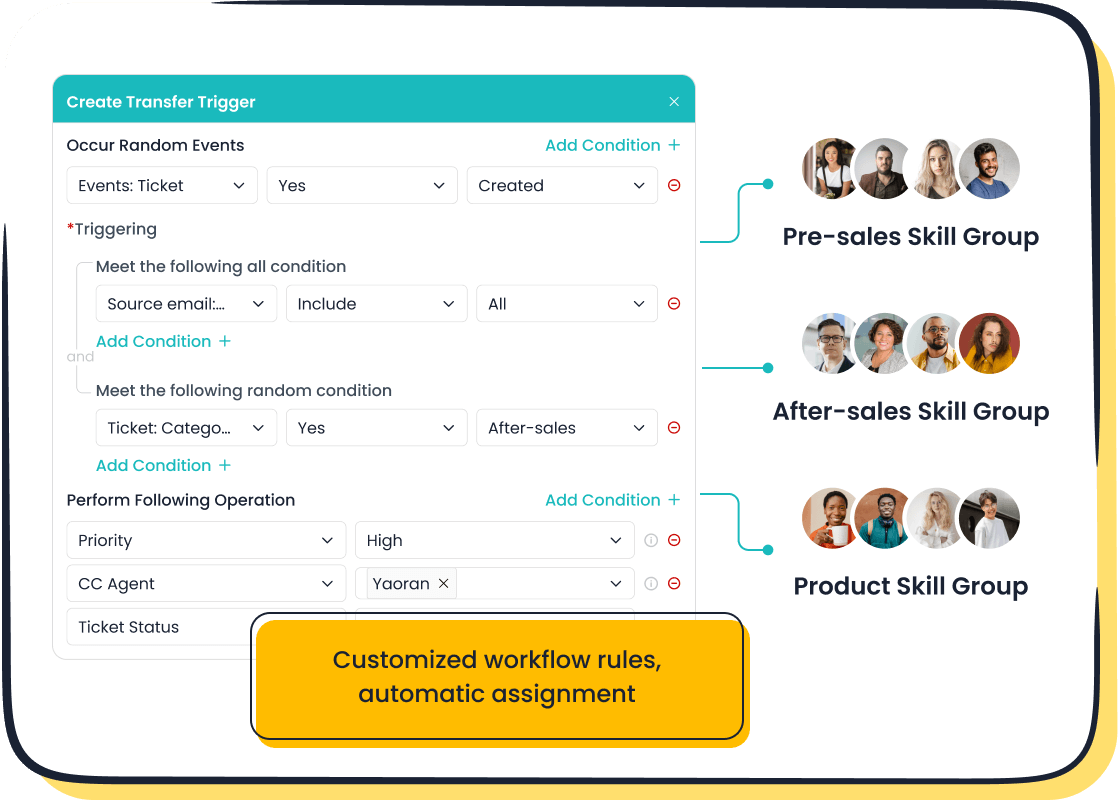
Efficient ticket management begins with the creation, assignment, and tracking of support tickets. A robust ticketing system ensures that every customer inquiry is logged as a ticket, which is then assigned to the appropriate agent. This process eliminates confusion and ensures accountability. For example, Sobot's ticketing system automates ticket routing based on predefined rules, reducing manual effort and improving accuracy.
Tracking tickets in real-time allows agents to monitor progress and update customers promptly. This transparency builds trust and ensures faster response times. Businesses using such systems often report improved productivity and customer satisfaction due to streamlined workflows.
Prioritization and categorization of customer requests.
Not all customer issues carry the same urgency. A ticketing system helps prioritize and categorize tickets based on factors like urgency, impact, or customer type. For instance, critical issues can be flagged for immediate attention, while less urgent ones are queued accordingly.
This structured approach ensures that high-priority tickets are resolved quickly, reducing customer frustration. Sobot's system even allows you to merge duplicate tickets, saving time and avoiding redundant efforts. By categorizing requests, your team can focus on what matters most, improving overall efficiency.
Automation and Workflow Optimization
Automated ticket routing and escalation.
Automation of tasks like ticket routing and escalation significantly enhances operational efficiency. A ticketing system automatically directs tickets to the right agents based on their skills or workload. This reduces delays and ensures faster resolution times. For example, Sobot's system uses custom triggers to route tickets instantly, minimizing manual intervention.
Escalation workflows ensure that unresolved tickets move to higher support levels when necessary. This guarantees that no issue remains unattended, improving service quality and customer satisfaction.
Predefined responses and SLA management.
Predefined responses, or canned replies, save time by providing quick answers to common queries. These responses maintain consistency and reduce the workload for agents. Sobot's ticketing system includes categorized templates, making it easier to address repetitive issues efficiently.
SLA (Service Level Agreement) management ensures that tickets are resolved within agreed timeframes. For instance, you can set response and resolution deadlines based on ticket priority. This feature helps maintain service commitments and boosts customer trust.
Multi-Channel Integration
Unified handling of email, chat, phone, and social media.
Modern customers use multiple channels to reach out for support. A ticketing system with multichannel support consolidates all inquiries into a single platform. This eliminates the need to switch between tools, saving time and reducing errors. According to a Salesforce study, 71% of customers prefer using different communication channels based on context, making omnichannel support essential.

Sobot's ticketing system integrates email, chat, phone, and even social media, ensuring seamless communication. This unified approach enhances customer engagement and simplifies ticket management for your team.
Seamless customer interaction across platforms.
A ticketing system ensures that customers enjoy a consistent experience, regardless of the channel they use. For example, a customer might start a conversation on social media and continue it via email. The system keeps all interactions linked to the same ticket, providing agents with complete context.
This seamless interaction improves resolution rates and customer satisfaction. Sobot's system even supports multilingual tickets, enabling businesses to cater to a global audience effectively.
Reporting and Analytics
Insights into team performance and customer trends.
A ticketing system provides valuable insights into your team's performance and customer behavior. By analyzing metrics like resolution time and customer satisfaction scores, you can identify strengths and areas for improvement. For example, if tickets frequently reopen, it may indicate unresolved issues that need attention. Tools like Sobot's ticketing system offer built-in analytics to track these trends, helping you make informed decisions.
You can also monitor how effectively your knowledge base supports your team. High utilization rates suggest that agents and customers find it helpful, while low rates may signal the need for updates. These insights allow you to refine your processes and improve service quality.
Metrics for improving service quality.
Tracking specific metrics ensures your team consistently delivers high-quality support. Below is a table highlighting key metrics and their importance:
| Metric | Type | Description |
|---|---|---|
| Customer Satisfaction Score (CSAT) | Customer Experience | Gauges customer satisfaction with the accuracy of the knowledge provided. |
| Resolution Time | Efficiency | The speed at which tickets are closed reflects your process efficiency. |
| Ticket Reopens | Quality | Frequent ticket reopens signal unresolved issues, affecting customer satisfaction. |
| Error Rate | Quality | Minimizing errors in ticket handling is key to providing high-quality support. |
| Knowledge Base Utilization | Efficiency | A well-utilized knowledge base indicates effective problem-solving. |
By focusing on these metrics, you can enhance your team's efficiency and ensure a better customer experience.
Collaboration Tools
Internal notes and team communication.
Collaboration tools in a ticketing system improve communication among your team members. Features like private notes allow agents to share updates without exposing internal discussions to customers. For example, Sobot's system enables agents to add notes directly to tickets, ensuring everyone stays informed. This keeps the resolution process smooth and professional.
Real-time chat and ticket comments also help agents collaborate on complex issues. These tools reduce delays by allowing instant communication, which speeds up problem-solving and improves customer satisfaction.
Shared access to ticket history.
Shared ticket histories provide your team with a complete view of past interactions. This ensures agents have all the context they need to resolve issues effectively. For instance, Sobot's ticketing system links all customer interactions to a single ticket, making it easy to track progress.
This feature also helps when tickets are escalated or reassigned. The new agent can quickly review the history and continue the resolution process without delays. By streamlining access to information, shared ticket histories enhance both team efficiency and customer satisfaction.
How a Ticketing System Works

Step-by-Step Process
Customer submits a request through a preferred channel.
The process begins when a customer submits a request through their chosen communication channel, such as email, chat, or phone. A modern ticketing system consolidates these inquiries into a single platform, ensuring no request is overlooked. This centralized approach simplifies tracking and improves efficiency.
Ticket is created and routed to the appropriate agent.
Once the request is received, the system automatically creates a ticket. It categorizes and prioritizes the ticket based on urgency or predefined rules. Advanced systems like Sobot's use intelligent routing to assign tickets to the most suitable agent, ensuring faster resolution times.
Agent resolves the issue and updates the ticket.
The assigned agent works on resolving the issue, often using tools like an integrated knowledge base for quick access to relevant information. Real-time updates keep the customer informed about the ticket's progress, enhancing transparency and trust.
Ticket is closed, and feedback is collected.
After resolving the issue, the agent closes the ticket. The system then collects customer feedback to evaluate satisfaction and identify areas for improvement. This feedback loop helps businesses refine their support processes.
| Stage | Description |
|---|---|
| Ticket Creation | Users submit tickets via various channels, which are then categorized for proper routing. |
| Prioritization | Tickets are prioritized based on urgency, ensuring critical issues receive immediate attention. |
| Assignment | Tickets are assigned to agents with the necessary skills for resolution. |
| Resolution | Agents work on resolving the ticket, often communicating with users for additional information. |
| Follow-up | Agents check back with users to confirm resolution and satisfaction. |
| Closure | Once resolved, tickets are closed, and feedback is collected for continuous improvement. |
Integration with Other Tools
CRM systems and knowledge bases.
Integrating a ticketing system with CRM platforms and an integrated knowledge base enhances efficiency. CRM integration provides agents with a complete view of customer history, enabling personalized support. The knowledge base offers quick access to solutions, reducing resolution times and improving accuracy.
Communication platforms like Slack or Microsoft Teams.
Connecting your ticketing system with communication tools like Slack or Microsoft Teams fosters collaboration. Agents can share updates, discuss complex issues, and resolve tickets faster. This integration also ensures that teams stay aligned, even when working remotely.
- Centralized management of support requests allows for a comprehensive view of all customer queries.
- Faster response times are achieved through automation features like ticket routing and prioritization.
- Improved accountability is ensured by assigning each support request to a specific agent or team.
- Better customer experience is facilitated by real-time status updates and quicker resolution times.
- Enhanced team collaboration is supported through tools that allow agents from different teams to share information.
- Data-driven insights from advanced reporting tools help optimize support operations.
Sobot's Ticketing System in Action
Unified platform for managing customer interactions.
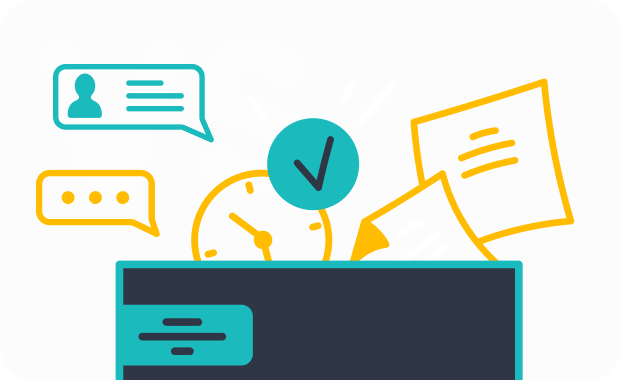
Sobot's ticketing system provides a unified platform to manage all customer interactions. It integrates multiple channels, including email, chat, and phone, into one interface. This ensures seamless communication and eliminates the need to switch between tools.
Intelligent tools like SLA reminders and custom triggers.
Sobot's intelligent tools, such as SLA reminders and custom triggers, automate workflows and enhance efficiency. SLA reminders ensure timely responses, while custom triggers route tickets to the right agents. These features reduce manual effort and improve customer satisfaction.
Benefits of Using a Ticketing System for Customer Service

Enhanced Efficiency
Faster response times and resolution rates.
A ticketing system for customer service significantly reduces response and resolution times. Automation ensures that support tickets are routed to the right agents instantly, eliminating delays caused by manual processes. For instance, studies show that ticketing systems can cut response times by 50% and resolution times by 75%. This speed directly impacts customer satisfaction, as faster resolutions lead to happier customers.
Sobot's ticketing system enhances efficiency by automating ticket routing and prioritization. Its intelligent tools ensure that urgent customer service requests receive immediate attention, helping your team resolve issues faster and more effectively.
Reduced manual workload through automation.
Automation in ticket management minimizes repetitive tasks, allowing agents to focus on complex customer issues. Features like predefined responses and SLA tracking streamline workflows, reducing manual effort. For example, Sobot's system automates ticket creation and categorization, saving time and improving accuracy.
By automating routine tasks, your team can handle higher ticket volumes without compromising service quality. This not only improves efficiency but also drives business efficiency by optimizing resource allocation.
Improved Collaboration
Better communication between team members.
Collaboration tools within a ticketing system improve communication among agents. Real-time chat and internal notes allow team members to share updates and seek assistance quickly. This seamless interaction ensures accurate responses and faster resolutions.
Sobot's ticketing system integrates communication features like ticket comments and group messaging, fostering better collaboration. These tools help your team work together efficiently, even when managing complex support requests.
Shared access to customer information.
A centralized platform provides shared access to customer data, ensuring agents have all the context they need. This reduces the time spent searching for information and improves ticket resolution rates. For example, Sobot's system links all customer interactions to a single ticket, offering a complete view of the issue.
Shared access also enhances customer support processes by enabling agents to pick up where others left off. This continuity ensures a smoother experience for your customers.
Increased Customer Satisfaction
Consistent and timely support experiences.
Consistency is key to enhanced customer service. A ticketing system ensures that every customer receives timely and uniform support. Metrics like response and resolution times help you monitor performance and identify areas for improvement. For example, structured ticket management reduces ticket backlogs, ensuring no customer issues are overlooked.
Sobot's system supports SLA management, ensuring that tickets are resolved within agreed timeframes. This consistency builds trust and improves customer satisfaction.
Personalized responses based on ticket history.
Personalization enhances customer satisfaction by addressing specific needs. A ticketing system stores ticket history, enabling agents to provide tailored responses. For instance, Sobot's "One Customer ID" feature consolidates all customer interactions, helping agents deliver personalized support.
This approach not only resolves issues effectively but also strengthens customer relationships. Personalized service demonstrates that you value your customers, encouraging loyalty and repeat business.
Data-Driven Decision Making
Use of analytics to identify trends and improve processes.
Analytics play a crucial role in optimizing customer support operations. By analyzing data from your ticketing system, you can uncover trends and identify areas for improvement. For example, tracking metrics like ticket reopens or escalation rates helps you pinpoint knowledge gaps or process inefficiencies. A high escalation rate might indicate that agents need additional training or that workflows require adjustments.
Sobot's ticketing system provides comprehensive analytics to help you make informed decisions. Metrics such as knowledge base utilization and customer satisfaction scores offer insights into how well your team is performing. For instance, frequent use of the knowledge base suggests that agents find it helpful, while low usage may signal the need for updates. These insights enable you to refine your processes, ensuring better resolution rates and higher customer satisfaction.
| Metric | Category | Description |
|---|---|---|
| Customer Satisfaction Score | Customer Experience | Gauges customer satisfaction with the accuracy of the knowledge provided. |
| Resolution Time | Efficiency | Measures how quickly tickets are resolved, reflecting process efficiency. |
| Ticket Reopens | Quality | Tracks reopened tickets due to insufficient resolution or knowledge gaps. |
| Knowledge Base Utilization | Efficiency | Monitors how often agents and customers use the knowledge base. |
| Escalation Rate | Efficiency | Indicates potential bottlenecks or training needs when tickets escalate. |
By leveraging these analytics, you can continuously improve your customer support processes and deliver exceptional service.
Tracking KPIs like first response time and resolution time.
Key performance indicators (KPIs) like first response time and resolution time are essential for evaluating your support team's efficiency. First response time measures how quickly agents acknowledge a support ticket, while resolution time tracks how long it takes to fully resolve an issue. Shorter times for both metrics indicate a more efficient and customer-focused operation.
Sobot's ticketing system helps you monitor these KPIs in real time. For example, automated ticket routing ensures that tickets reach the right agent immediately, reducing delays. This not only improves resolution times but also enhances customer satisfaction by providing timely and effective support.
Real-World Success Stories

How OPPO improved efficiency with Sobot's Ticketing System.
OPPO, a global leader in smart devices, faced challenges in managing customer inquiries during peak shopping periods. By implementing Sobot's ticketing system, OPPO streamlined its workflows and improved efficiency. The system's automation features allowed OPPO to handle repetitive queries with chatbots, freeing agents to focus on complex issues. This human-machine collaboration significantly enhanced their customer support operations.
Sobot also helped OPPO integrate its global customer channels and business systems, eliminating data silos. This integration provided agents with seamless access to customer information, enabling faster and more accurate resolutions. The result was a more efficient support process that met the demands of a growing customer base.
Key results achieved, such as higher resolution rates.
The implementation of Sobot's ticketing system delivered impressive results for OPPO. The company achieved an 83% chatbot resolution rate, demonstrating the effectiveness of automated workflows. Additionally, OPPO saw a 94% positive feedback rate, reflecting high customer satisfaction. These improvements contributed to a 57% increase in repurchase rates, showcasing the long-term benefits of efficient customer support.
Other organizations have also experienced similar gains. For instance, a behavioral health education provider reduced delays by organizing customer inquiries, while a global trading platform improved multilingual support with a centralized knowledge base. These examples highlight how a robust ticketing system can transform customer support operations.
Choosing the Right Ticketing System for Your Business
Factors to Consider
Scalability and customization options.
When selecting a ticketing system, scalability is crucial. Your business may grow, and the system should adapt to increased customer service requests without compromising performance. A scalable solution ensures smooth operations during peak periods, such as holiday sales or product launches. For example, companies like Minnetronix Medical have improved ticket resolution by adopting systems that handle growing workloads efficiently.
Customization is equally important. Every business has unique needs, and a ticketing system should allow you to tailor workflows, ticket fields, and automation rules. Features like custom fields enable you to manage customer requests in a way that aligns with your processes. This flexibility ensures the system evolves with your business.
Ease of use and implementation.
A user-friendly ticketing system minimizes the learning curve for your team. Intuitive interfaces and straightforward workflows allow agents to focus on resolving tickets rather than navigating complex software. For instance, Sobot’s system simplifies ticket management with features like intelligent routing and real-time tracking.
Implementation should also be seamless. Look for systems that integrate easily with your existing tools, such as CRM platforms or communication channels. Quick deployment reduces downtime and ensures your team can start managing customer requests immediately.
Evaluating Features
Multi-channel support and automation capabilities.
A robust ticketing system must offer multichannel support. Customers often use various platforms, such as email, chat, or social media, to reach out. Omnichannel support consolidates these interactions into a single interface, ensuring no inquiries are overlooked. For example, Sobot’s system integrates multiple channels, enhancing customer interaction and simplifying ticket tracking.
Automation capabilities further enhance efficiency. Tasks like ticket routing, escalation, and predefined responses save time and reduce manual effort. Automation also improves resolution speed, as seen in companies like Whirlpool, which achieved faster solutions and reduced ticket volumes by 15-20%.
Reporting and integration with existing tools.
Comprehensive reporting provides insights into team performance and customer trends. Metrics like resolution time and customer satisfaction scores help you identify areas for improvement. Sobot’s trusted analytics, with over 80% accuracy, empower you to make data-driven decisions.
Integration with existing tools, such as Slack or Microsoft Teams, fosters collaboration. It also ensures agents have access to customer data from CRM systems, enabling personalized support. This seamless connectivity enhances both efficiency and customer satisfaction.
Why Choose Sobot's Ticketing System
Unique advantages like multilingual support and trusted analytics.
Sobot’s ticketing system stands out with its multilingual support, catering to diverse customer bases. This feature ensures smooth communication, regardless of language barriers. Additionally, Sobot’s trusted analytics provide actionable insights with over 80% accuracy, helping you optimize your support operations. These tools contribute to a 97% customer satisfaction rate, showcasing the system’s effectiveness.
Seamless integration with e-commerce platforms.
Sobot’s system integrates effortlessly with popular e-commerce platforms like Shopify. This integration streamlines ticket management by linking customer orders and inquiries. For businesses in retail or online sales, this feature ensures faster resolutions and improved customer experiences. By unifying data across platforms, Sobot helps you deliver consistent and efficient support.
Examples of Popular Ticketing Systems
Overview of tools like Zendesk, Freshdesk, and Sobot.
Several ticketing systems are widely used in customer service today. Zendesk and Freshdesk are two well-known options that offer robust features for managing customer inquiries. Zendesk provides tools for multichannel support and advanced analytics, making it suitable for large enterprises. Freshdesk focuses on ease of use and affordability, appealing to small and medium-sized businesses.
Sobot, however, stands out as a comprehensive solution for businesses of all sizes. It integrates multiple communication channels, such as email, chat, and phone, into one unified platform. This feature ensures seamless ticket management and eliminates the need for switching between tools. Sobot also supports multilingual tickets, making it ideal for global businesses. Its intelligent tools, like SLA reminders and custom triggers, enhance efficiency and improve customer satisfaction.
Key differentiators and use cases.
Each ticketing system has unique strengths that cater to different business needs. Zendesk excels in handling complex workflows and large-scale operations. Freshdesk is often chosen for its simplicity and cost-effectiveness, making it a good fit for startups or smaller teams.
Sobot differentiates itself with its focus on automation and integration. For example, its ticketing system automates ticket routing and prioritization, reducing manual effort. Businesses in industries like retail and e-commerce benefit from Sobot's seamless integration with platforms like Shopify. This feature links customer orders with support tickets, enabling faster resolutions. Additionally, Sobot's trusted analytics provide actionable insights, helping businesses improve their customer service strategies.
By choosing the right ticketing system, you can streamline your operations and deliver exceptional support tailored to your customers' needs.
A ticketing system for customer service is essential for modern businesses. It simplifies managing inquiries, improves response times, and boosts customer satisfaction. Sobot's Ticketing System offers tools like SLA management and automation to streamline workflows and enhance collaboration. Its multilingual support ensures seamless service for global customers. By adopting Sobot's solution, you can transform your customer service operations and deliver exceptional experiences. Explore Sobot's offerings today to meet your business needs and exceed customer expectations.
Ready to elevate your customer service? Visit Sobot's Ticketing System to learn more.
FAQ
What is the main purpose of a ticketing system?
A ticketing system helps you manage customer inquiries efficiently. It organizes requests into tickets, tracks their progress, and ensures timely resolutions. For example, Sobot's Ticketing System automates ticket routing and prioritization, reducing response times and improving customer satisfaction.
Can a ticketing system handle multiple communication channels?
Yes, modern ticketing systems integrate multiple channels like email, chat, and phone into one platform. Sobot's system even supports social media and e-commerce platforms, ensuring seamless communication. This feature eliminates the need to switch tools, saving time and reducing errors.
How does automation improve ticket management?
Automation streamlines repetitive tasks like ticket routing, categorization, and escalation. Sobot's system uses custom triggers to assign tickets instantly, ensuring faster resolutions. This reduces manual effort and allows your team to focus on complex issues, boosting efficiency.
Is Sobot's Ticketing System suitable for global businesses?
Absolutely! Sobot's system supports multilingual tickets, enabling you to serve customers in their preferred language. This feature makes it ideal for global businesses aiming to provide consistent and personalized support across different regions.
What metrics can a ticketing system track?
A ticketing system tracks metrics like resolution time, customer satisfaction scores, and ticket reopens. Sobot's trusted analytics provide actionable insights, helping you identify trends and improve processes. For instance, monitoring first response time ensures your team meets customer expectations promptly.
See Also
The 10 Most Effective Customer Service Tools for 2024
Excelling in Live Chat for Enhanced Customer Support
Perfecting Live Chat Strategies for Retail Success